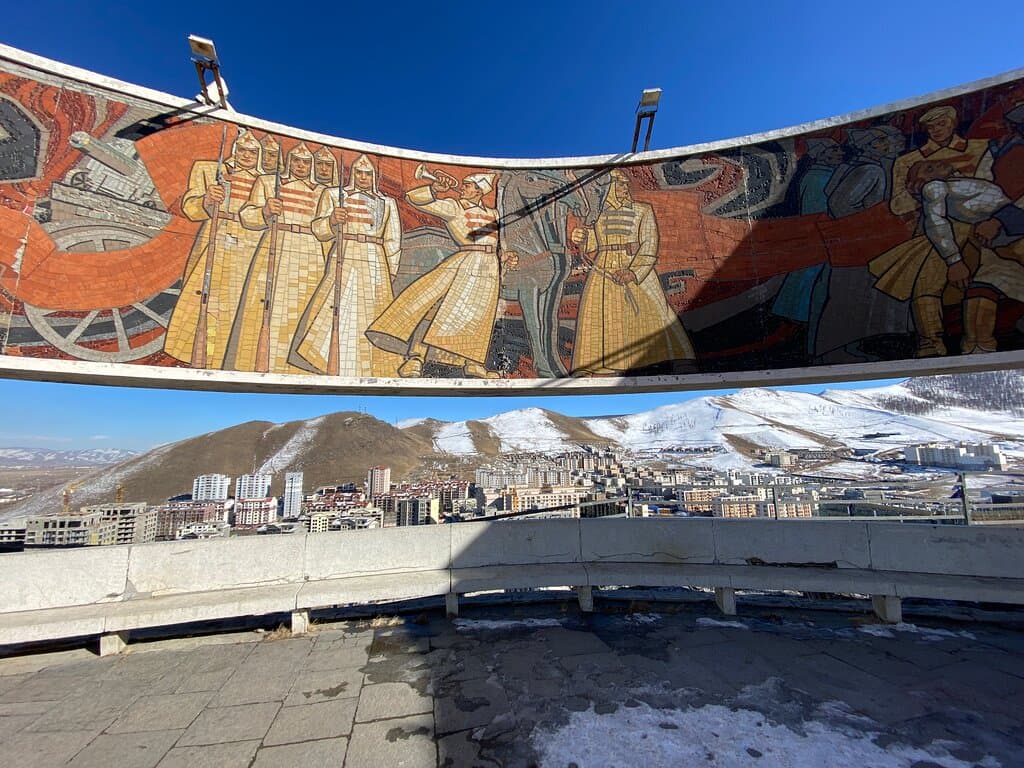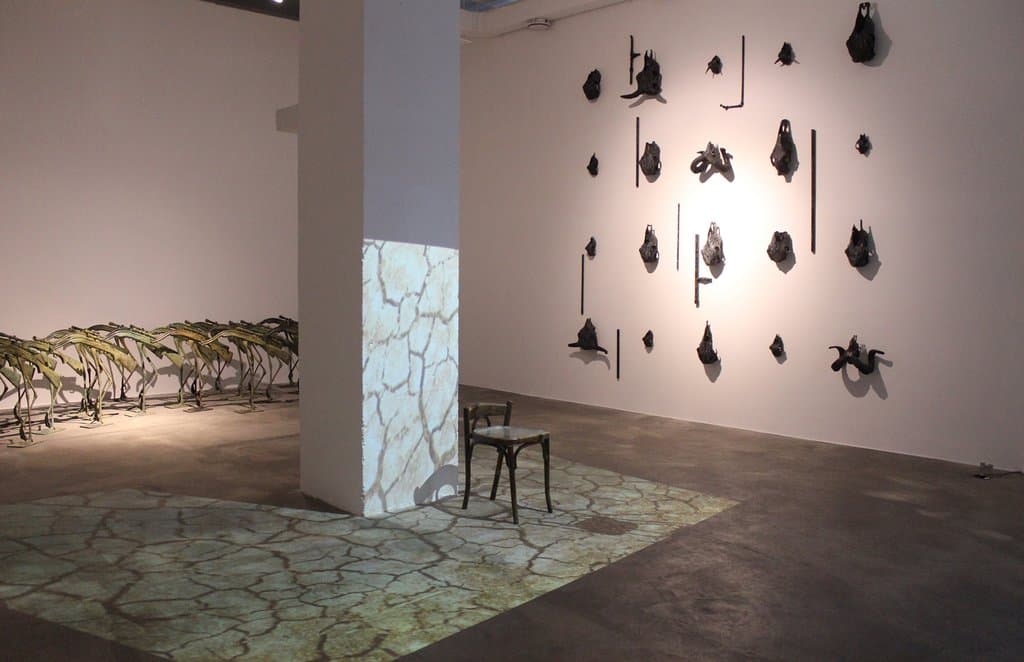Statue of Sükhbaatar Ulaanbaatar
The monumental equestrian statue of Damdin Sükhbaatar, a symbol of Mongolian independence, stands proudly in the heart of Ulaanbaatar's central square...
Highlights
Must-see attractions

Social
From TikTok & Reddit
Best Time
Pleasant weather for exploring
Statue of Sükhbaatar Ulaanbaatar
Best Time
Pleasant weather for exploring
Highlights
Must-see attractions
The monumental equestrian statue of Damdin Sükhbaatar, a symbol of Mongolian independence, stands proudly in the heart of Ulaanbaatar's central square.
"An imposing monument, the statue is a powerful symbol of Mongolian nationalism and a reminder of the country's struggle for independence."
📸 Perfect Photo Spot
Stand in front of the statue, facing the Government Palace for an iconic shot.
🚶♀️ Explore the Square
Wander around Sukhbaatar Square to soak in the atmosphere and observe local life.
Highlights
Discover the most iconic attractions and experiences
Equestrian Statue of Damdin Sükhbaatar
Sukhbaatar Square
An imposing bronze statue of the revolutionary hero on horseback, a powerful symbol of Mongolian independence.
Sukhbaatar Square
Central Ulaanbaatar
The vast public plaza surrounding the statue, a vibrant hub for locals and a backdrop to significant national events.
Government Palace
North side of Sukhbaatar Square
The imposing building framing the north of the square, housing important government institutions.
Plans like a pro.
Thinks like you
Planning Your Visit
Embrace the Grandeur
Historical Context is Key
Best Times
Insider Tips
from TikTok, Instagram & Reddit
📸 Perfect Photo Spot
Stand in front of the statue, facing the Government Palace for an iconic shot.
🚶♀️ Explore the Square
Wander around Sukhbaatar Square to soak in the atmosphere and observe local life.
🏛️ Admire Architecture
Note the surrounding buildings like the Government Palace and State Opera House.
💡 Understand the History
Learn about Damdin Sükhbaatar's role in Mongolian independence for deeper appreciation.
Tips
from all over the internet
📸 Perfect Photo Spot
Stand in front of the statue, facing the Government Palace for an iconic shot.
🚶♀️ Explore the Square
Wander around Sukhbaatar Square to soak in the atmosphere and observe local life.
🏛️ Admire Architecture
Note the surrounding buildings like the Government Palace and State Opera House.
💡 Understand the History
Learn about Damdin Sükhbaatar's role in Mongolian independence for deeper appreciation.
What Travellers Say
Reviews Summary
Visitors consistently praise the Statue of Sükhbaatar and Sukhbaatar Square as iconic landmarks representing Mongolian independence and national pride. The grandeur of the equestrian statue and the historical significance of the square are frequently highlighted as major draws. While the area is central and visually striking, some find it can be quite windswept and exposed.
"Sükhbaatar Square, the heart of Ulaanbaatar, Mongolia, is a sprawling public plaza named after revolutionary hero Damdin Sükhbaatar, whose 1921 victory over Chinese forces sparked independence. Originally called “Freedom Square,” it was renamed in 1946, with his equestrian statue—erected in 1946—dominating its center. Designed in the 1920s as the city shifted from a monastic hub to a Soviet-style capital, it’s framed by key buildings: the Government Palace (north), State Opera (east), and modern towers like Blue Sky (south). Once a dusty field, it grew into a ceremonial and protest space, notably during 1990’s democracy rallies. Today, it’s a vibrant mix of history and modernity, hosting festivals, skateboarding teens, and tourists, with Genghis Khan’s statue adding gravitas since 2006.
The equestrian statue of Damdin Sükhbaatar, unveiled on July 8, 1946, anchors Sükhbaatar Square in Ulaanbaatar. Crafted by sculptor Sonomyn Choimbol, it depicts the revolutionary leader astride his horse, arm raised, commemorating his 1921 declaration of independence from China. Made of bronze, it stands 4 meters tall on a 12-meter pedestal, facing north toward the Government Palace. A symbol of Mongolian resilience, it’s a focal point for national pride and gatherings."
Indranil Bhattacharjee
"Damdin Sükhbaatar (1893-1923) was a Mongolian revolutionary, founder of the Mongolian People's Party & leader of the Mongolian partisan army that took Khüree during the Mongolian Revolution of 1921 & enshrined as the "Father of Mongolia's Revolution"..."
PJ, SMJ & DNJ
"The equestrian statue of Damdin Sükhbaatar, the iconic figure of Mongolian independence, stands tall and proud at the heart of Sukhbaatar Square. This imposing monument, unveiled in 1946, depicts Sükhbaatar on horseback, his arm raised in a gesture of defiance and leadership. The statue serves as a powerful symbol of Mongolian nationalism and a reminder of the country's struggle for independence.
While the statue itself is impressive, it's worth noting that its historical significance is often debated. Some argue that it represents a romanticized and idealized version of Mongolian history, while others see it as a symbol of national unity and pride. Regardless of one's perspective, the statue remains a focal point of Sukhbaatar Square and a popular spot for photos and gatherings."
Vagabond Couple
What People Like
What People Dislike
Frequently Asked Questions
🚇 🗺️ Getting There
The statue is located in Sukhbaatar Square, the central square of Ulaanbaatar. It's easily accessible by taxi or public bus from most parts of the city. Many guided tours also include this as a primary stop.
Yes, Sukhbaatar Square is very central. Many hotels and other key sites like the National Museum of Mongolia are within walking distance, making it a convenient point to start or end your exploration.
Taxis are readily available and relatively inexpensive. Ride-sharing apps are also popular. For a more local experience, consider the city buses, though they can be crowded.
🎫 🎫 Tickets & Entry
No, there is no ticket required to view the Statue of Sükhbaatar or to enter Sukhbaatar Square. It's a public space accessible to everyone.
Sukhbaatar Square is a public plaza and is generally accessible 24/7. However, specific events or ceremonies might temporarily restrict access.
There are no fees to visit the statue or the square. It's a free public monument and gathering space.
🎫 🧭 Onsite Experience
Besides admiring the statue, you can explore Sukhbaatar Square, visit the Government Palace, and observe daily life. The National Museum of Mongolia is also nearby.
Sukhbaatar Square is generally considered safe, especially during the day. As with any major city square, be aware of your surroundings and keep an eye on your belongings.
Yes, photography is permitted. The statue and the surrounding architecture make for excellent photo opportunities.
The statue commemorates Damdin Sükhbaatar, a key leader in Mongolia's 1921 revolution and independence. It's a symbol of national pride and history.
Restrooms might be available in nearby public buildings or cafes. Several cafes and restaurants are located around the square, offering refreshments.
📸 📸 Photography
Early morning or late afternoon light offers the best photographic conditions, with softer shadows. Summer mornings are also pleasant for capturing the square.
Try capturing the statue from the front, with the Government Palace as a backdrop. Experiment with wider shots to include the entire square and its surroundings.
Drone usage is generally restricted in urban areas, especially around government buildings. It's best to check local regulations before flying a drone.
For Different Travelers
Tailored advice for your travel style
👨👩👧 Families with Kids
Consider visiting during a national holiday if your trip coincides, as these events often feature vibrant parades and performances that can be very engaging for children. Nearby attractions like the National Museum of Mongolia can also provide educational and entertaining experiences for the whole family.
📸 Photographers
The surrounding architecture, including the Government Palace and the State Opera House, adds to the visual appeal. Golden hour light can create dramatic effects, while the vastness of the square allows for capturing the scale of the city. Be mindful of crowds during peak times or events.
Deep Dives
In-depth insights and expert knowledge
The Legacy of Damdin Sükhbaatar
The statue itself, unveiled in 1946, depicts Sükhbaatar on horseback, his arm raised, symbolizing his command and the nation's triumph. It stands as a potent emblem of Mongolian nationalism and resilience. While some historical interpretations may vary, the statue undeniably remains a focal point for national pride and a constant reminder of the nation's struggle for sovereignty.
Visiting the statue offers a chance to connect with Mongolia's past. It's not just a piece of art but a historical marker that continues to inspire national identity. Many visitors find it a powerful symbol of the country's enduring spirit.
Sukhbaatar Square: The Heartbeat of Ulaanbaatar
This vast expanse has witnessed significant historical moments, including the pro-democracy protests of the 1990s. Today, it's a dynamic public space where you can see everything from national parades and festivals to teenagers skateboarding and locals simply enjoying the open air. The presence of the Sükhbaatar statue and the imposing Government Palace on its north side underscore its importance.
When visiting, take time to appreciate the scale of the square and the diverse activities unfolding within it. It's a place where history meets contemporary life, offering a true glimpse into the pulse of Ulaanbaatar.



Social
from TikTok, Instagram & Reddit